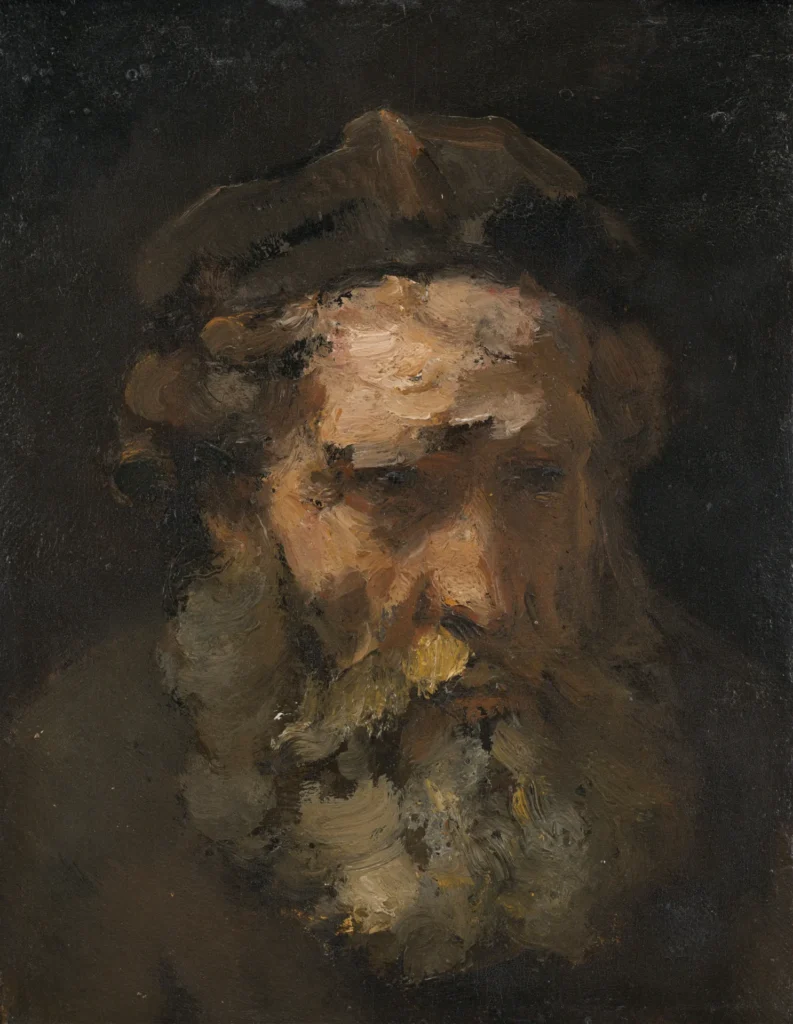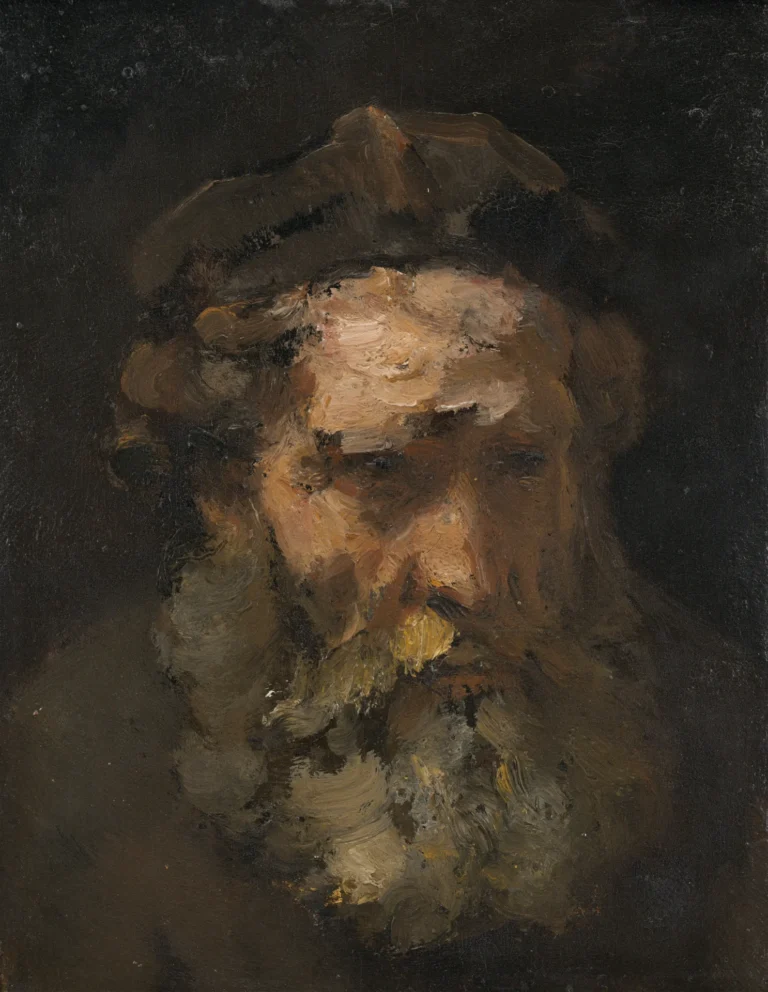Head of Saint Matthew
Head of Saint Matthew is a striking portrayal of the revered biblical figure, executed in oil on panel. Measuring 25 cm by 19.5 cm, this subtle yet powerful work dates back to 1660-1664 and reflects the baroque influences of its time. While not definitively a work by Rembrandt himself, its connection to his workshop is evident, revealing the artist's emotive brushwork and masterful understanding of light and shadow. This piece stands distinct from Rembrandt’s more celebrated works, yet captivates audiences with its intimate representation of Saint Matthew.
1660 - 1664
About the Artwork
The creation of Head of Saint Matthew occurs during a pivotal moment in art history when Rembrandt's style was profoundly shaping the Baroque movement. Crafted between 1660 and 1664, this piece is a product of the workshop environment that Rembrandt fostered, where students and followers were encouraged to learn through emulation. This particular painting emphasizes the connection between the artist and his pupil's interpretations. The work fits into the broader context of Rembrandt's exploration of biblical themes, showcasing the introspective contemplation present in many of his figures. Given that it shares the subject with his larger piece, 'Saint Matthew and the Angel,' the Head of Saint Matthew serves to highlight how different formats and scales can affect narrative and viewer engagement.
Did You Know
Liked what you see? Add it to your collection.
Enjoyed reading? Share it.
... continued
Key Details of "Head of Saint Matthew"
Medium and Dimensions: The painting is executed in oil on panel, measuring 25 cm (9.8 in) in height and 19.5 cm (7.6 in) in width.
Date: It is dated between 1660 and 1664.
Location: The painting is part of the collection at the National Gallery of Art in Washington, D.C., with the accession number 1942.9.58.
Attribution: While it is often associated with Rembrandt, it is sometimes attributed to a "follower of Rembrandt van Rijn" or the "Rembrandt Workshop".
Distinction from "Saint Matthew and the Angel"
This work is different from Rembrandt's "Saint Matthew and the Angel," which is a more elaborate painting.
Saint Matthew and the Angel: This painting, dated to 1661, depicts Saint Matthew sitting at a table with an open book, an angel guiding his hand. It is an oil on canvas work, larger in size (96 cm x 81 cm), and is housed at the Louvre in Paris.










